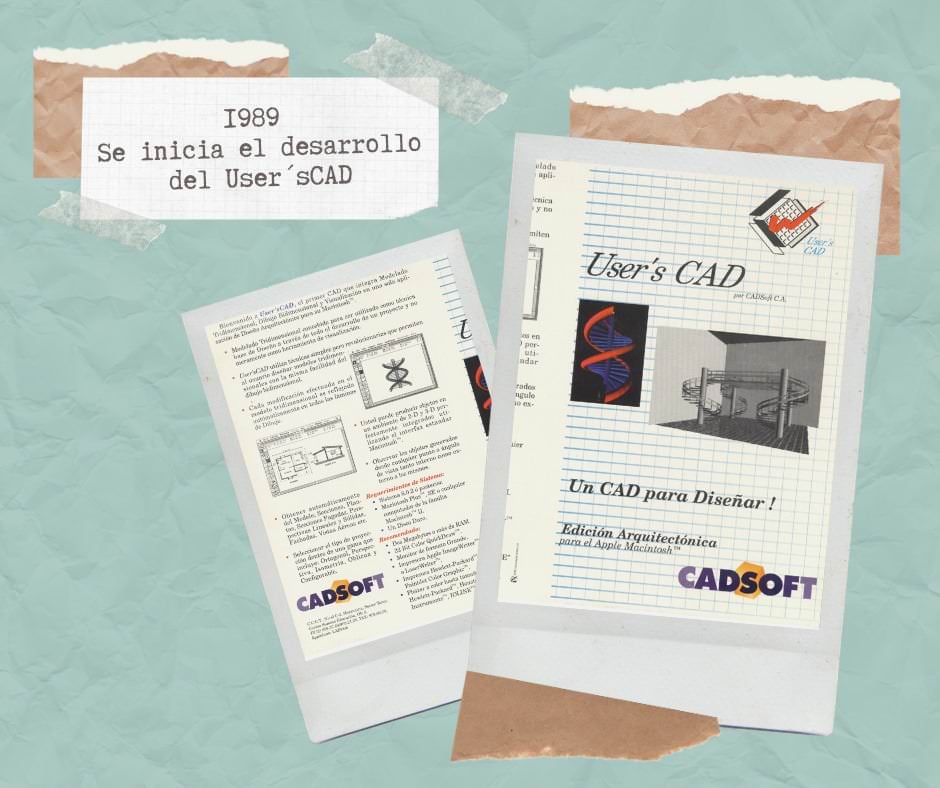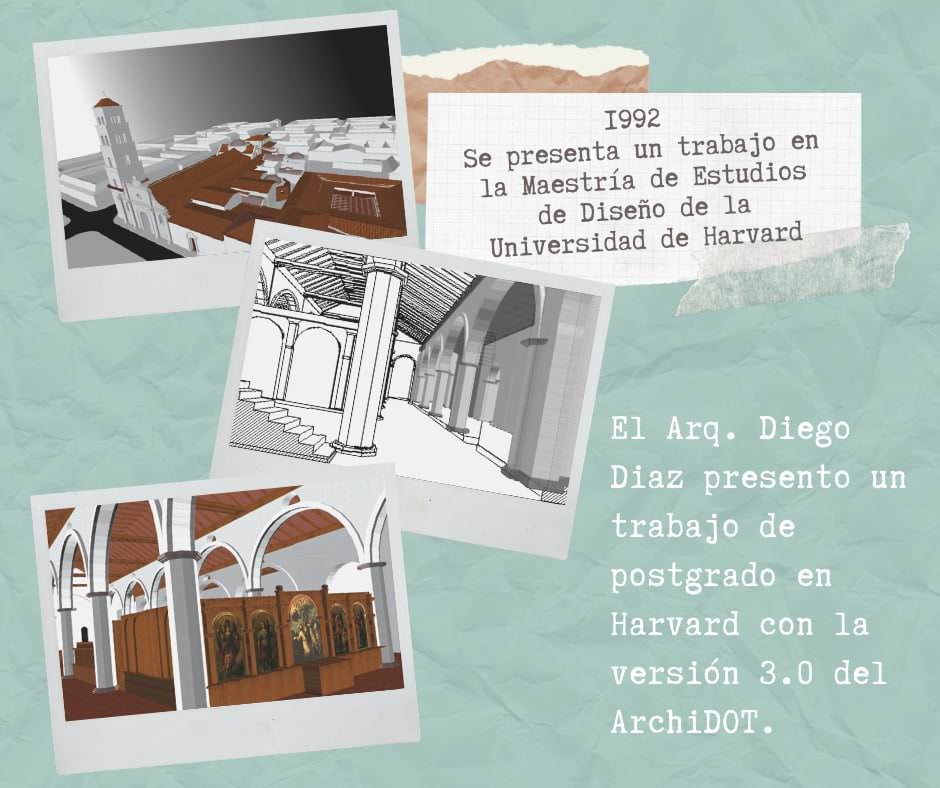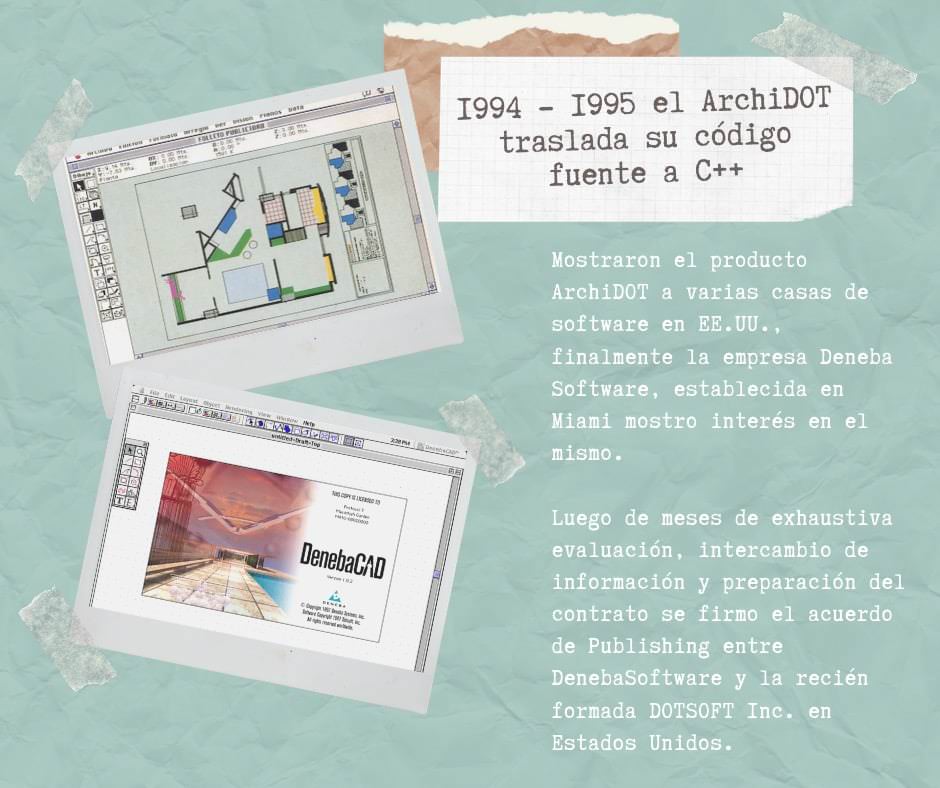I recently stumbled across a series of Facebook posts about the origins of DenebaCAD, from humble beginnings as MasterCAD on Atari ST, of all unlikely places. The app still exists today as DCAD VectorSpace. Here I provide the story translated from Spanish into English.
| Year | Title | Platform | Distribution |
|---|---|---|---|
| 1988 | MasterCAD | Atari ST | Retail |
| 1989 | User’s CAD | Macintosh | Beta |
| 1991 | ArchiDOT 2.0 | Macintosh | Retail |
| 1992 | ArchiDOT 3.0 | Macintosh | Retail |
| 1997 | DenebaCAD | Macintosh | Retail |
This breakthrough CAD software was created by Hernán Pisani at INDI C.A. (Calle Madrid, Qta. El Pilar, Las Mercedes, Caracas, Venezuela).
The below is taken from Metamorfosis 3D on Facebook with the text presented in full below, albeit translated from Spanish using DeepL.
In 1988 and MasterCAD was sold to the world by several @ATARI distributors. MasterCAD was present in several industrialized countries and version 2.0 was presented at the COMDEX in Las Vegas from November 14 to 19, 1988. In that year the program was reviewed in different specialized publications such as ST WORLD of England, ST INFORMER, STAR, CURRENT NOTES of the United States totaling 17 pages of dedication by them. Due to the limited presence of Atari computers in the professional world, despite the power of the Atari 1040 ST, it was decided to opt for the support of the Apple Latin America initiative for local developers and an agreement was reached with Atari Venezuela leaving them the MasterCAD product in the ATARI environment as far as the development had reached and continue with the technology they had developed in Macintosh, which was undoubtedly a larger market. Thus began the development of a beta version of ArchiDOT which they called User’sCAD, a considerably more powerful and user friendly product.
In 1989 the development of the pilot project of a product that was thought to be called user User’sCAD and that later would be launched on the market under the name of ArchiDOT (Architectural Design Oriented Tool) began. Already here it was realized that the development of the product should be oriented only to architectural design and not pretend to solve problems of other engineering, in order not to complicate the tool pretending to also solve different thought processes and running the risk that the tool would no longer be intuitive. The program was based on Mac II and Mac SE hardware with the support of the A.C.E. program of APPLE Corp represented in Venezuela by PLUS SISTEMAS. This development, still in Alpha phase, was presented at the WORLWIDE DEVELOPERS CONFERENCE held in San Jose California in May 1989, receiving comments of praise from the representative of APPLE Latin America and other members of the Apple Staff as well as from the representatives of the Tecnológico de Monterrey.
In 1990 the CADD Room was inaugurated at the Simon Bolivar University. Hernan to date had spent 20,000.00 architect-hours of analysis and 11,000.00 hours of programming accumulated from the origin to User’sCAD, an architecture-oriented CAD. Its version ß3 participated in the Latin American Software contest in May 1990, competing with the finished applications and being in sixth place with mention (first place in CAD), receiving comments of praise from Apple Computer’s staff representatives. In December 1990 it was presented with a booth at the DATA 90 exhibition in Miami, Florida. User’sCAD was selected in 1991 as the resident application in the laboratories of advanced design techniques at the School of Architecture of the Simon Bolivar University, Caracas, as a subject of the curriculum for two quarters. At that time the application, for marketing and identification reasons, the name User’sCAD was replaced by ArchiDOT 2.0 (Architectural Design Oriented Tool). In Venezuela alone, 150 architecture and construction companies successfully produced drawings with the program and successfully with Hernán’s program and consulting services.
In 1992 a work done in ArchiDOT was presented at Harvard University. Diego Diaz, using a Mac IIci of the time and ArchiDOT version 3.0, presented his independent study work as part of his master’s degree at Harvard University and received an evaluation and recommendation of the software by the computer lab of the GSD (Graduate School of Design).
In 1993 CADSOFT, the company founded by Hernan, starts again the international marketing with the opening of the Spanish market and ArchiDOT passes the necessary quality control tests for this demanding market. Our distributor in Spain: The company Microgestió in Barcelona is in charge of distributing the software in their authorized Apple stores. On the other hand, also in 1993, Architect Carlos Pollak (Head of CADD USB Room) recently presented a paper at the World Congress of Architectural Education (Prague 1993) on the use of ArchiDOT in design education. As a result of the good role played by the product, Apple Czech Republic showed interest in distributing it in that country.
Between 1994 and 1995 ArchiDOT was shown to several software houses in the United States and attracted the interest of Deneba Software. ArchiDOT was written up to that time in Symantec Pascal, a good language that was used to its full potential but was clearly insufficient for the development of a world class CAD version. They ported, through the use of the PtoC converter, the Pascal code and the mathematical algorithms of ArchiDOT to the C++ language in its implementation “Code Warrior” of Metrowerks, to give birth to a much superior application in speed and performance, generating laboratory versions that were tested by several users among which I was. It was amazing at that time the image quality that we could achieve with that version that could only be surpassed with render engines years later. The conversion process from Pascal to C++ was in charge of Eng. Federico Zappi. The next step was the development of the new interface that was in charge of Architect Hernan Pisani and Mr. Doug Levy, vice-president of Deneba Software. All this happened after signing a publishing contract with Deneba Software, which gave birth to Deneba CAD.






Fuel my writing habit with a ko.fi donation!
--
Comments: @gingerbeardman